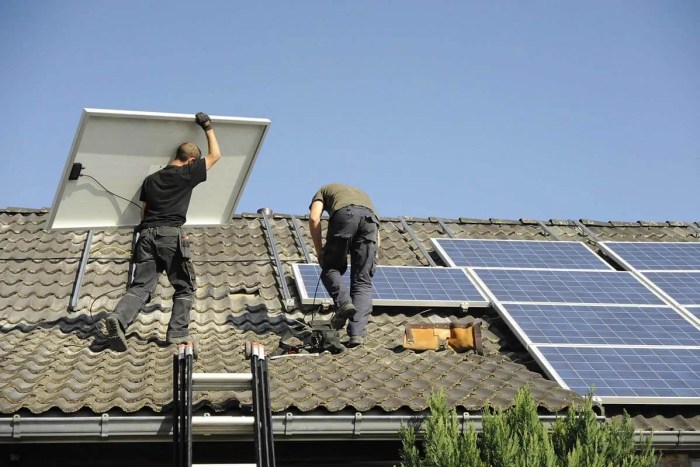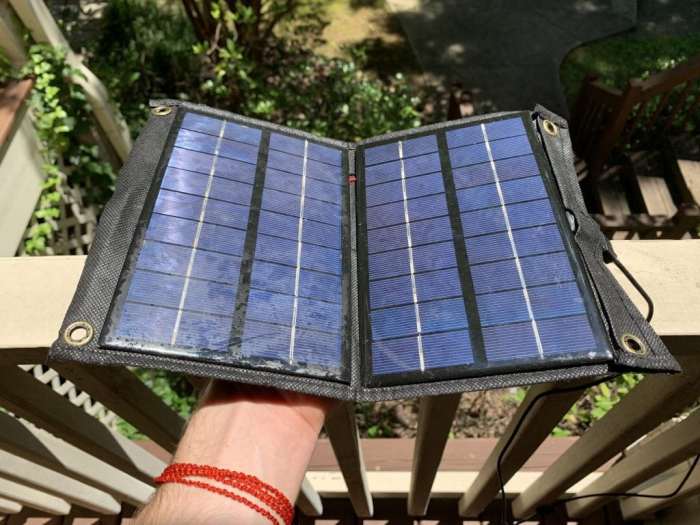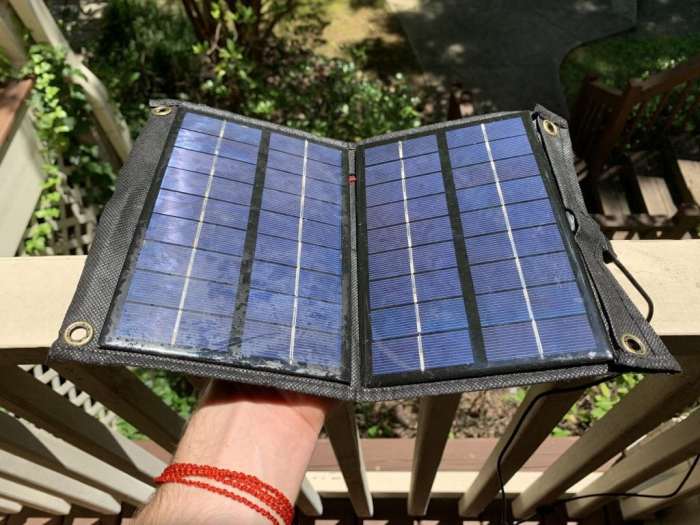DIY Home Solar Power System: Harnessing the sun’s energy to power your home is a rewarding and increasingly popular endeavor. This guide will take you through the process of designing, installing, and maintaining your own solar system, empowering you to become more energy-independent and environmentally conscious.
From understanding the basics of solar energy conversion to selecting the right components and navigating the installation process, we’ll cover all the essential aspects of building a DIY solar power system. Whether you’re a seasoned DIY enthusiast or a curious homeowner looking to explore renewable energy options, this guide provides a comprehensive roadmap for your journey towards solar independence.
Benefits and Drawbacks

Installing a DIY solar power system can be a rewarding endeavor, offering both financial and environmental benefits. However, it’s crucial to carefully consider the potential challenges and drawbacks before embarking on this project. This section delves into the advantages and disadvantages of DIY solar installations, comparing them to professionally installed systems.
Advantages of DIY Solar Power Systems
A DIY solar power system can provide several advantages, including:
- Cost Savings: By installing the system yourself, you can potentially save on labor costs, which can represent a significant portion of the overall expense. This allows you to invest in higher-quality components or expand your system’s capacity within your budget.
- Increased Control and Customization: DIY installations offer greater control over the system’s design and components. You can choose the specific panels, inverters, and batteries that best suit your needs and budget. This allows for greater flexibility in system configuration and customization to optimize performance for your specific energy requirements.
- Learning Experience: The process of installing a DIY solar system can be a valuable learning experience. You gain practical knowledge about solar technology, electrical systems, and renewable energy principles. This understanding can empower you to maintain and troubleshoot your system effectively.
- Environmental Benefits: By generating your own electricity from renewable sources, you reduce your reliance on fossil fuels and contribute to a cleaner environment. This helps mitigate your carbon footprint and promotes sustainable energy practices.
Disadvantages of DIY Solar Power Systems
While DIY solar installations offer advantages, it’s essential to acknowledge the potential drawbacks:
- Technical Expertise: Installing a solar power system requires a certain level of technical expertise in electrical wiring, solar panel installation, and system integration. If you lack these skills, it’s advisable to seek professional assistance or invest in thorough training before attempting a DIY installation.
- Safety Risks: Working with electricity can be hazardous. Improper installation or wiring can lead to electrical shocks, fires, or damage to your equipment. It’s crucial to prioritize safety and follow all electrical codes and regulations during installation.
- Time Commitment: Installing a solar power system is a time-consuming project that requires planning, research, and careful execution. You need to allocate sufficient time for research, component selection, installation, and troubleshooting.
- Warranty and Support: DIY installations may not be covered by manufacturer warranties, and obtaining technical support can be challenging. Professional installations often come with warranties and ongoing support from qualified technicians.
DIY vs. Professional Installation
The decision to install a DIY solar system or hire a professional depends on your individual circumstances and preferences.
Advantages of Professional Installation
- Expertise and Experience: Professional installers have the knowledge, skills, and experience to ensure proper installation, system optimization, and compliance with local codes and regulations. They can handle complex installations and troubleshoot issues effectively.
- Warranty and Support: Professional installations often come with manufacturer warranties and ongoing support from the installer. This provides peace of mind and ensures that your system is properly maintained and functioning efficiently.
- Code Compliance: Professional installers are familiar with local building codes and regulations, ensuring that your system is installed safely and legally. This reduces the risk of fines or legal issues.
Disadvantages of Professional Installation
- Higher Cost: Hiring a professional installer will significantly increase the overall cost of your solar power system. Labor costs can represent a substantial portion of the total expense.
- Less Control: You have less control over the design and components of your system when you hire a professional installer. They may recommend specific products or configurations based on their experience and knowledge.
DIY Solar Power System Examples: Diy Home Solar Power System

It can be inspiring to see real-world examples of DIY solar power systems in action. These systems showcase the diverse ways people are harnessing the sun’s energy to power their homes. Let’s explore some notable examples, highlighting the components and installation methods employed.
Off-Grid Cabin Solar System, Diy home solar power system
This system powers a small cabin located in a remote area, completely independent of the grid.
- Solar Panels: 4 x 100-watt monocrystalline solar panels, providing a total of 400 watts of power. These panels are mounted on a south-facing roof, ensuring optimal sunlight exposure.
- Charge Controller: A 30-amp MPPT charge controller efficiently regulates the flow of electricity from the solar panels to the batteries. This ensures the batteries are charged at the optimal rate and prevents overcharging.
- Batteries: 2 x 12-volt deep-cycle batteries, providing a total of 24 volts and 200 amp-hours of storage capacity. These batteries store the energy generated by the solar panels for use during nighttime or cloudy days.
- Inverter: A 1200-watt pure sine wave inverter converts the DC power from the batteries to AC power, suitable for powering household appliances.
- Wiring and Connectors: Heavy-duty wiring and weatherproof connectors ensure safe and reliable connections between the system components.
The system’s installation involved mounting the solar panels on the roof, securing the batteries in a weatherproof enclosure, and connecting all the components according to the manufacturer’s instructions. The homeowner utilized readily available tools and materials, demonstrating the feasibility of a DIY approach.
Grid-Tied Solar System for a Home
This system is connected to the electric grid, allowing homeowners to sell excess energy back to the utility company.
- Solar Panels: 8 x 250-watt polycrystalline solar panels, totaling 2000 watts of power generation. These panels are installed on the roof, tilted at an angle to optimize sunlight capture.
- Inverter: A 2500-watt grid-tie inverter converts DC power from the solar panels to AC power and synchronizes it with the grid. This allows the system to seamlessly integrate with the existing electrical system.
- Monitoring System: A digital display provides real-time information on energy generation, consumption, and savings. This allows homeowners to track the system’s performance and adjust their energy usage accordingly.
- Wiring and Connectors: Heavy-duty wiring and weatherproof connectors ensure safe and reliable connections between the system components and the grid.
The installation involved mounting the solar panels on the roof, connecting the inverter to the electrical panel, and registering the system with the utility company. This process requires some technical expertise, but many homeowners have successfully installed grid-tied systems themselves.
Building a DIY home solar power system is a journey of learning, empowerment, and environmental responsibility. By taking the time to understand the principles, plan carefully, and execute the installation with safety in mind, you can harness the power of the sun to create a more sustainable and cost-effective future for your home. Remember, while DIY solar systems offer significant benefits, it’s crucial to prioritize safety and consult with qualified professionals when necessary. With careful planning and execution, your DIY solar power system can become a source of pride and a testament to your commitment to a greener future.
Building a DIY home solar power system is a great way to reduce your carbon footprint and save money on your energy bills. However, before you start soldering wires, it’s important to take care of your eyes. If you’re experiencing irritation or inflammation, you might want to consider using maxitrol eye drops to soothe and protect them.
Once your eyes are healthy, you can confidently tackle the exciting project of setting up your own solar power system.

